Photo: Carl Court | Getty
I’m a big fan of the Order of Battle series, and while that’s mostly down to its snappy turn-based strategy, it’s also because the games dare to visit theatres of the Second World War that competitors never even consider. The latest example: asking you to take a break from a war against Japan to go and arrest Gandhi.
[referenced url=”https://www.kotaku.com.au/2017/06/order-of-battle-world-war-ii-the-kotaku-review/” thumb=”https://https://i.kinja-img.com/gawker-media/image/upload/s–J3gIt6Q1–/c_scale,fl_progressive,q_80,w_1600/dgx4st5jicbsjsaatvzq.jpg” title=”Order Of Battle: World War II: The Kotaku Review” excerpt=”You might remember that back in 2015 I reviewed a game called Order of Battle. Pacific, and liked it a lot. In the months and years since, developers The Aristocrats have been working on a bunch of new campaigns that take the game well past its original scope, incorporating battles ranging from the Chinese countryside to the North Atlantic.”]
OoB’s latest campaign is called Road to Burma, and focuses on the conflict between Japan and the British in South East Asia during the Second World War. Among battles over Singapore and Malaya it features a detour where an uprising in India demands the player’s attention.
It’s based around the Quit India movement, a 1942 push led by Gandhi to force the British Empire to relinquish their most important overseas possession.

It called for an “orderly British withdrawal”, and millions of people across the country protested, with many workers going on strike. Despite the protest’s largely peaceful aims, the British were having none of it. In the midst of a war that threatened the future of their Empire, they were in no mood for talk, and instead moved to crush the movement as quickly as possible.

The India National Congress’ leadership — including Gandhi himself — was arrested, with many of its members spending the rest of the war in prison. Tens of thousands of protestors were locked up and/or publicly flogged, while hundreds were shot dead by army police.
Order of Battle asks you to recreate this crackdown, by putting you in charge of British forces. Including the same police forces responsible for those shooting deaths. It’s a bit…yeah.
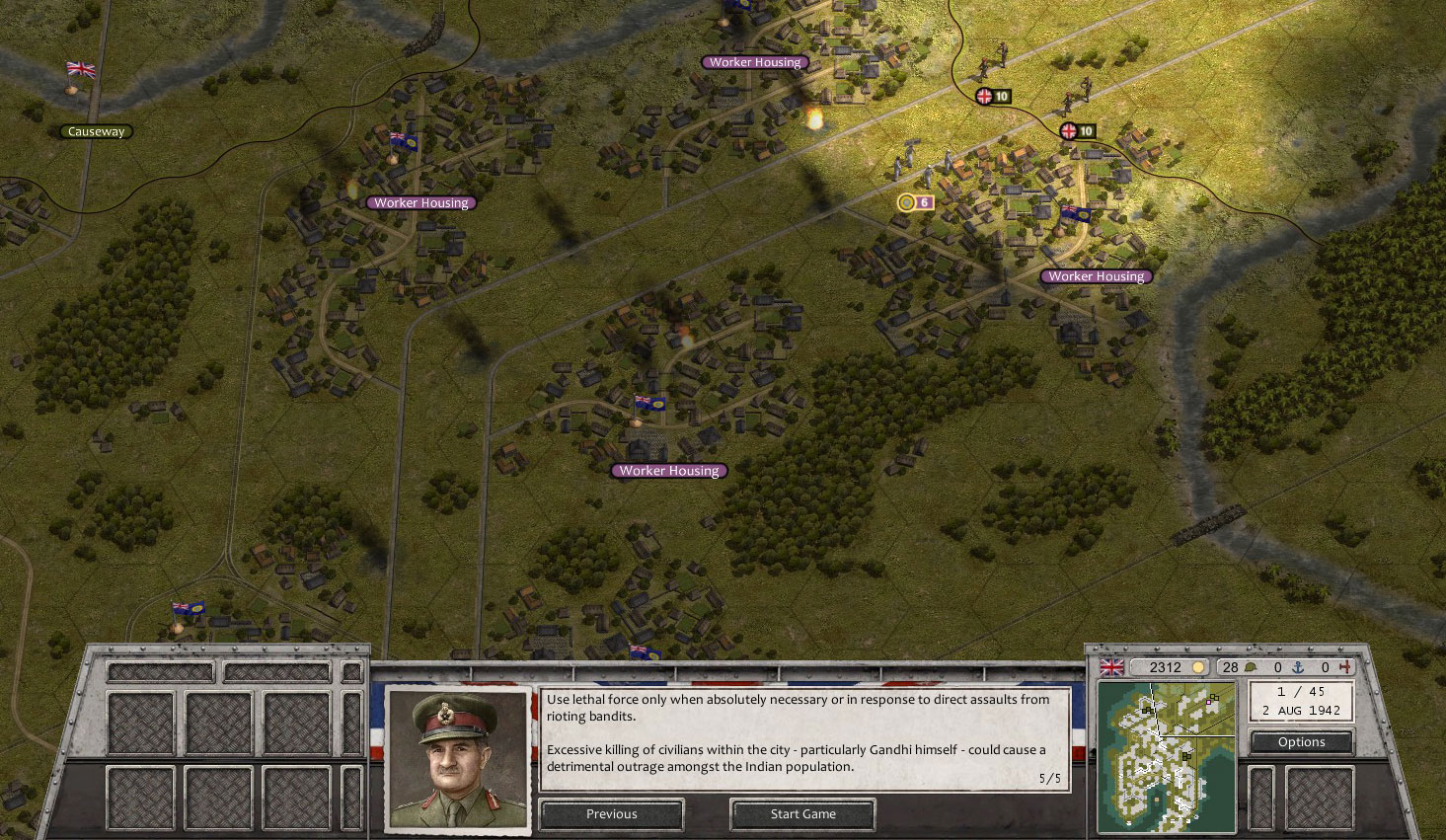
At first I was a bit unsettled by the whole premise. This is a series where literally the only thing you do in every other mission is move around a map and destroy enemy units. And here I was, being asked to do largely the same thing, only this time instead of shooting Nazis or Japanese troops, I was targeting rioters and striking factory workers whose only goal was to liberate their homeland from a foreign power’s control. Oh, and then go and arrest Mahatma Gandhi.
The first time I played the mission, I swiftly failed a secondary objective called “DO NOT KILL FACTORY WORKERS” because…I killed a load of them. Not because I wanted to go out of my way to do it, it’s just that’s what you do in this game. There were guys with red crosshairs around them, and I moved up to them, and I shot them, because that was the only option available.
It’s not like I was presented with a drop-down menu asking me whether I wanted to shoot or arrest these guys. But what OoB had done a poor job of explaining/showing, and what I only picked up during a second playthrough, was that you don’t have to kill them.
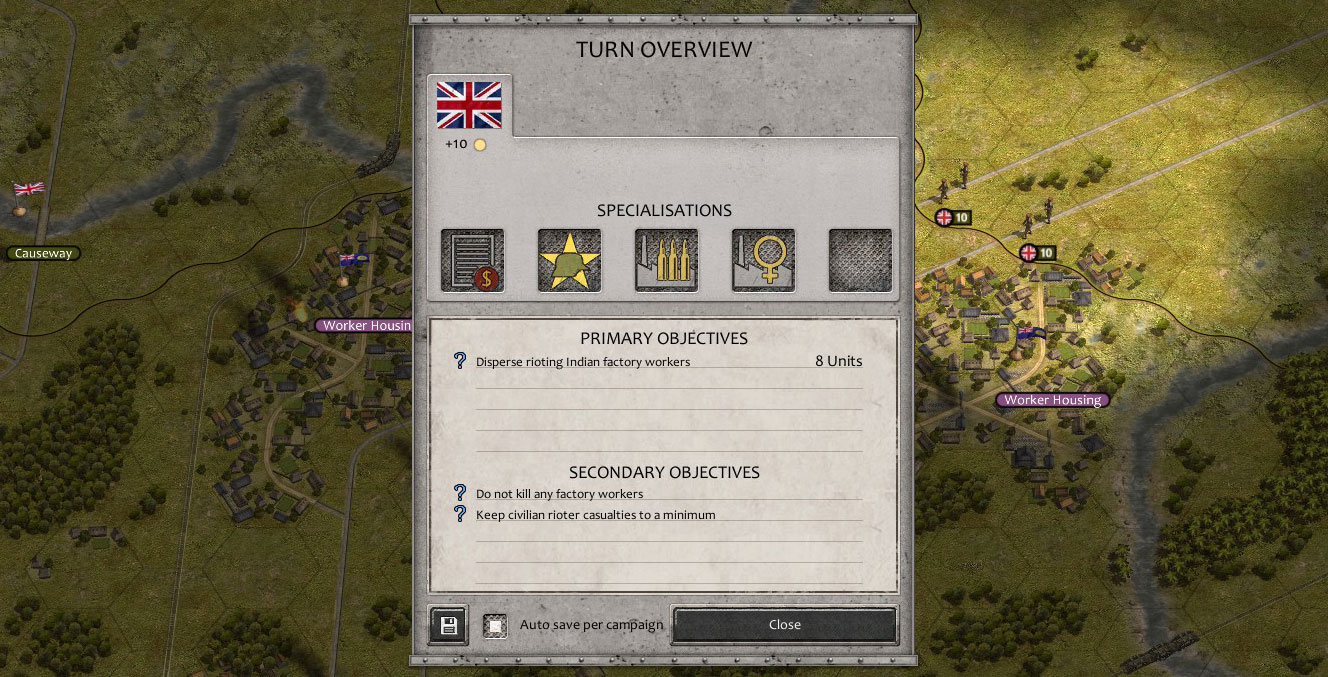
Instead, this mission subverts the entire game’s main premise by asking you to move around the “bad guys”. Factory workers simply need to be pushed back into their homes, and rioters can be ignored as you probe deeper into Bombay’s urban sprawl on the hunt for Gandhi.
It’s a historical revision of the actual crackdown’s goals, of course, both in terms of your relatively peaceful objectives and the fact that riot control soon gives way to standard combat. “Bandit” units are introduced throughout the map, which unlike protesters are more traditional enemies that you’re able to engage with your tanks and artillery.
The actual Quit India movement had nowhere near this level of armed insurrection, but then this is a military strategy game at heart, not a crowd control simulator, so maybe the developers felt the need to maintain a little consistency even though the main objectives here are such a departure from the series’ norm.
It was uncomfortable playing through the mission. From the hindsight that 2017 affords, my sympathies of course lie with Gandhi and the Indian protesters, not the military units brought in to brutally disperse and imprison those civilians.
It’s as close to a “No Russian” moment as I think I’ve ever had in a strategy video game.
And yet, by the end of the mission, I’d grown to appreciate its inclusion in the game. While its overall tone is a bit clumsy, it actually served as a decent simulation of this kind of urban struggle, throwing the rest of the game’s sweeping military manoeuvres out the window in favour of a chaotic slog through city blocks, where every hex you move could be hiding someone waiting to throw a brick at you.
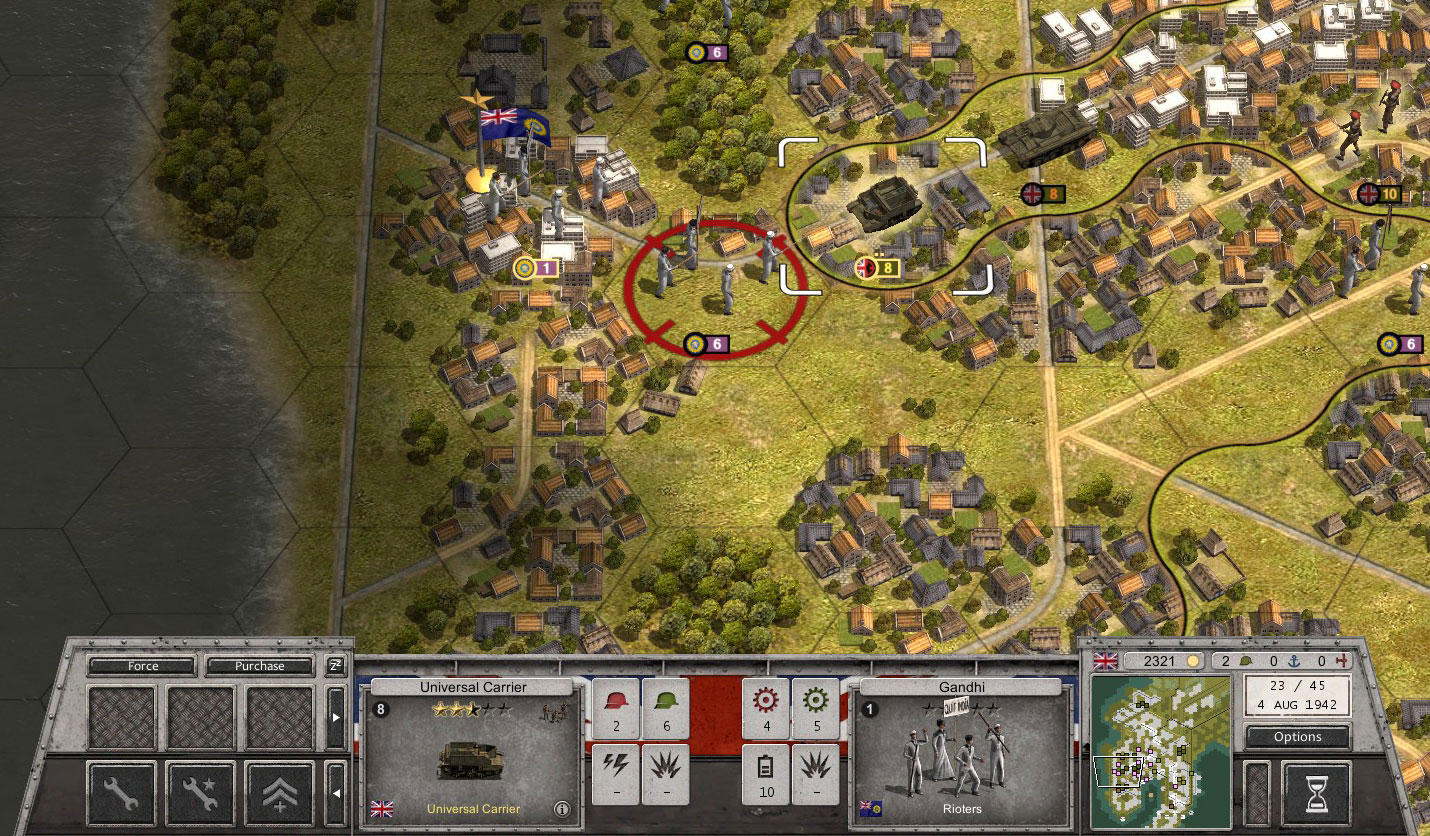
It was also perversely refreshing to sit through a confronting scenario like this. The easy thing to do, like almost everyone who’s ever made or played a WW2 strategy game set in Europe imagines, would have been to focus solely on military matters and turn a blind eye to the crimes and atrocities committed against civilians.
The game could have shipped without this mission included and nobody would have noticed or even cared. But it’s here, and everyone who plays Burma Road is now going get an interactive crash course in not just one of the more obscure theatres of the Second World War, but one of its most important social and political movements as well.
The Quit India that you help crush in this game was a fledgling movement that wasn’t just opposed by the British, but several other powerful sections of Indian society as well.
So when you finally locate Gandhi and lock him up, it’s presented to the player much like it felt at the time: that a nuisance had been dealt with, and an interruption to more important matters (namely, the invading Japanese forces) that could now be addressed.
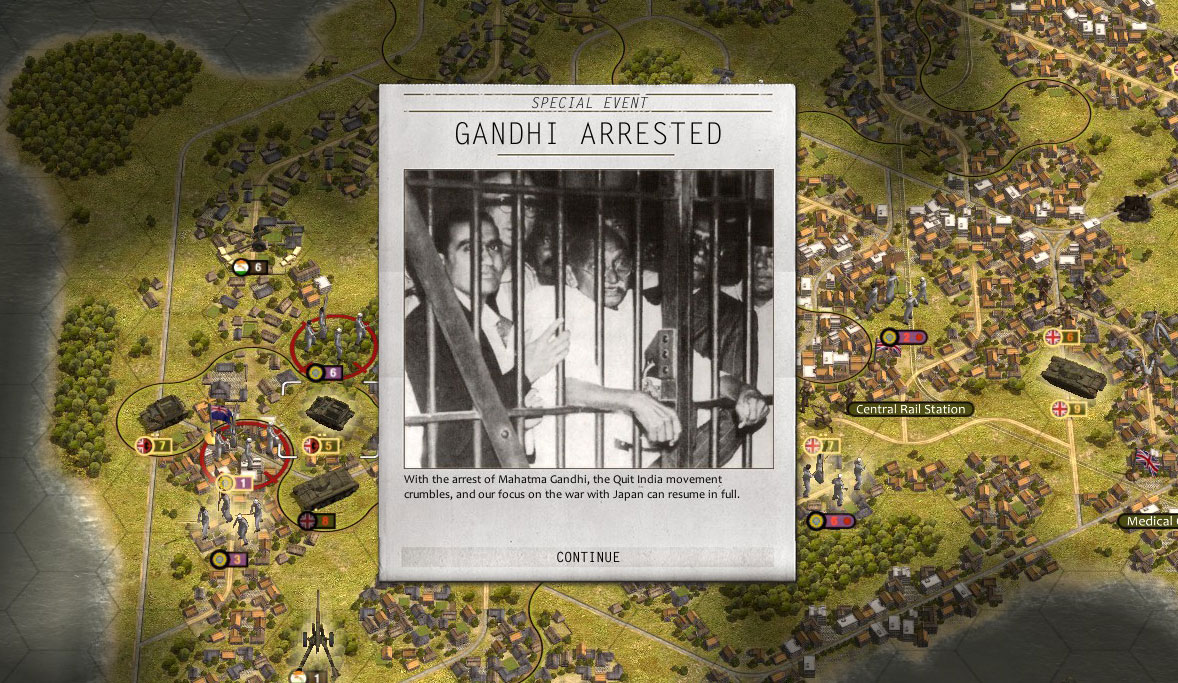
Yet just five years later, India — once the crown in the jewel of the largest empire the world had ever seen — would be free from British rule. And Gandhi’s imprisonment here in 1942, which included a 21-day hunger strike, cemented his role as one of the chief architects of that independence.
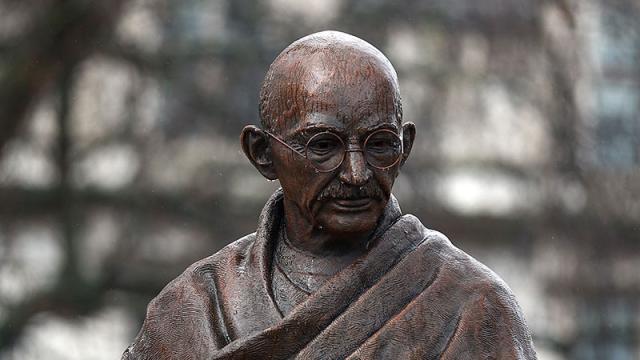
Comments
2 responses to “WW2 Game Picks A Fight With Gandhi”
I think it’s great way to teach history, and I think it did well if you felt “odd” while playing the scenario.
I would recommend checking out “Decisive campaigns: Barbarosa” from matrix games. You play the general in charge of either the German forces on the Eastern front or Stalin.
What makes it different for a grand strategy game is that personal interactions between generals play a part, i.e. pay too much attention to one general and another one might “loose” supplies meant for another general because he’s annoyed not to mention choices you make yourself.. You are required to take the oath of service to your country but do you also join the Nazi party? Do you let the SS death squads loose behind your lines to suppress partisans or do you refuse and even threaten to testify at any war crime trial after the war?
It’s one of the few strategy games that actually takes account of war crimes